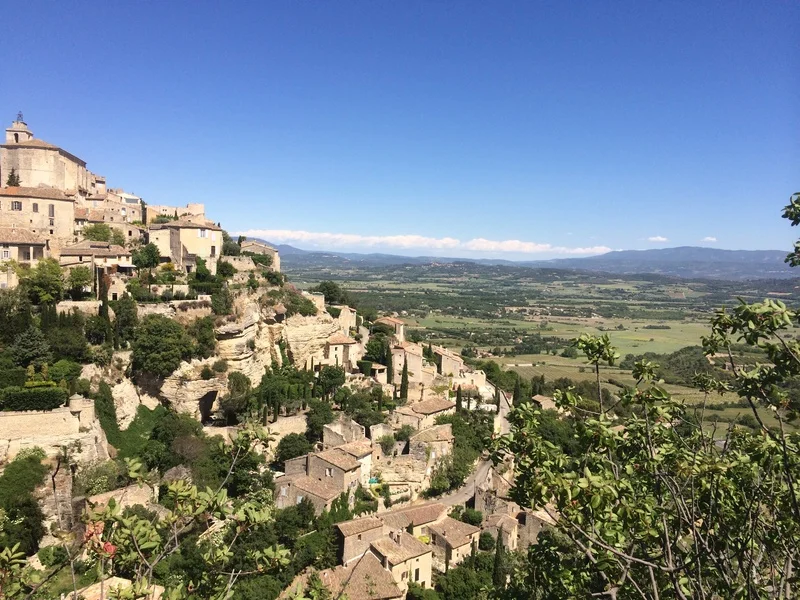Nicolas started us (and then restarted after the spill) with the Bourgogne Blanc Stel Vin 2012. A Chardonnay; this wine can be made from any region in Bourgogne (Burgandy), however, Domaine Michelot uses only grapes from Meursault, a region that yields the very best whites. This wine was very fresh and easy to drink. Open, with a tingling acidity in the front, a buttery warmth in the middle and a smooth melon finish. It was your everyday table white and nothing particularly special.
We went on to the Meursault Sous la Velle 2012. Nicolas showed me the “jam cork” that they are now using, which is made from breaking down the cork and pressing it into a very compact material, eliminating larger air holes. Although young, this wine has a fuller body and a pineapple taste. Nicolas presses his first two fingers against his thumb and flexing his wrist back and forth to search for the words, says it has “more fat on the tongue.”
Nicolas poured for us a glass of 2012 and 2010 Narvaux, a sect colder than the others with a higher elevation. We tried the 2012 first. With a lot of minerality on the nose, this wine starts fresh and then becomes spicy, warming the mouth in the middle, and ending with a salty finish. The 2010, however, was entirely different and much fruitier. It was very refreshing with flavors of prickly peach and mandarin oranges. I was transported to Baltimore on the brink of summer, sitting outside on Thames Street by the water.
The Meursault Charmes 1 er Cru 2012, which I expected to be good, had almost a vegetable quality to the nose and taste. Celery salt jumped to mind but that’s just because it’s one of those frequent and “appropriate” descriptors that weasel their way into filling the space while you are trying to place the smell. It wasn’t quite that; although, it was reminiscent of the celery aftertaste, the stringy part. It had a spicy finish that didn’t quite fit either. Nicolas tells me that this wine is very young and you are not to open it for 5 years.
“When too young, all taste same,” he explains as he dumps the rest into the pitch pot.
Nicolas poured us the Meursault Clos St. Felix 2011, whose grapes came from the Clos directly behind this Domaine, where I had looked out upon on my way in. He explained to me that “Clos” simply means a lot of vines that are enclosed with a stone wall. The sun warms the wall during the day, allowing the stones to hold that heat and warm the vines through the night. For this reason, they grow the quickest and are the first parcel picked during harvest. St. Felix has a compact limestone and clay soil with gravel overlay, “like a river,” Nicolas says. He points to the black, rock walls of the cave and says, “same.” The Clos St. Felix had a vanilla and perfume nose like spring flowers, and was much fruitier to the taste than the previous wines we had tried.
The Meursault Grands Charrons 2010, was one of the more interesting wines that I tried. Immediately, upon swirling and smelling the wine, you could pick up flint and salt on the nose. Nicolas called this “yod,” the first smell you get after just opening an oyster. He mimics shucking an oyster and then opening both hands, smells them as if he were inhaling the oyster. For the most part, this I how we communicated. He said it also was the smell of being served a plate of fresh seafood. It tasted entirely different than it smelled. There was high acidity on the front, but an unexpected honey in the mouth, followed by a citrus finish. It didn’t make any sense and I liked it for that reason.
Although we tried many of the different Meursault region wines, Nicolas focused on a few in particular to show how different they were – Charmes, Genevriere, & Perrieres. He described the differences to me in a way that made perfect sense to him but probably won’t to the rest of us. Charmes produced a more charming, fine, and fresh wine, while Genevriere lent to more of a generous one, and Perrieres was simply “straight.”
We compared the 2009, 2008, 2007, & 2003 Charmes. (A private vertical tasting by the winemaker and I was in heaven!) Nicolas told me that 2009 was an easy year with beautiful weather the entire season and an early September harvest. Nicolas said this wine smelled like “a forest after big rain, with mushroom.” I didn’t know about all that. To me, the aroma was reminiscent of dried fruit and the taste a more candied apricot or prune. But he was the expert and I liked his descriptions. They seemed to be just as off the wall as mine tended to be.
With a nose of Brioche, patisserie, and almond, the Charmes 2008, had a much fruitier taste, like ripe peaches. This wine was lovely - fully open and ready to drink. The Charmes 2007, however, strangely seemed younger than the 2008. With more acidity, it was harsher and not as well integrated. There was brief nuttiness on the nose and oak on the tongue, but it lent quickly to a citrus and salty finish.
Pouring the Charmes 2003, Nicolas told me that this was a very warm and dry year – too much so, that they had to harvest in August because the grapes grew too fast. Nicolas said, “you can smell the sun, the maturity.” It did have a burnt characteristic to the nose and mouth, but it smelled like salty ocean air to me, and tasted like salted caramels.
I liked to think of these wines as living things and give them personalities unique to themselves. I imagined them all to be siblings, born from the same family, growing up in the same town (Charmes or Perrieres), but in different time periods. They all had a similar foundation, but a different life. Growing up with the influence of their specific spot in time, as well as, experiencing different hands and circumstances along the way, they each yield an individual outcome. No two years and regions developing in the same way.
Genevrieres was the most forgiving of the families (sects) within Meursault. There was more soil in this region and thus produced a more generous wine. We tasted the Genevrieres 2009. The aroma of this wine was doing all sorts of things; I smelled herbs, flowers, and a slight licorice that was uncommon to me among white wines. It had something for everyone and the combination was not off putting as one might suspect. The mouth was filled with smooth flavors of dried fruits and nuts and had a long finish. One might call Genevrieres a skilled people pleaser; too reluctant to stand out overwhelmingly, she has a subtle way of relating to everyone she meets.
The straight shooter and fighter of the group was Perrieres. The vines in this sect grow out of volcanic rock above a quarry. Nicolas poured us the Meursault Perrieres 1 er Cru 2007. “It smells just like that place,” he says, “you can walk under Perrieres vines, drinking a glass of Perrieres.” I had never heard of anything like that before and was fascinated by the idea of a tunnel below the roots of the vines. This wine had very stubborn minerality on the nose and front, but if patient, finished softer and sweeter than expected.
Being the last bottle and 2 hours into this tasting, I thanked Nicolas and motioned that I would go now. He hesitated and drawing his finger, insisted that I wait for one last bottle, a “surprise.” He left the cave and returned several minutes later with a different looking, older, and unlabeled bottle bearing no indication of what it was. Blowing the dust off it, he looked up at me with a playful grin.
Discovering that the cork was all wet and no good upon opening it, he explained to me that, usually, every 15 years they take bottles like this one and transfer the liquid to newer bottles and re-cork them with current corks, in order to preserve them. This one, however, may have been skipped.
Pouring us each a full glass, he announced, "Le Limozin," and pushed it over to me. “Say vintage,” he said, watching me with amusement.
It was a deep golden hue, and I knew that it was going to be funky. I couldn’t help but think of a co-worker back at Boordy that would go crazy over this wine. At first, it smelled like dried fruits and toast, but it began to constantly change by the minute.
Dried fruits, toast, foie gras, bread, pâté on toast, mushrooms, salt. It was all of that. One of the most interesting wines I had ever tasted, between aromas and flavors, it was a complete meal. To me it was, quintessentially, sitting somewhere on the sea and eating some sort of duck pâté on buttered toast points, and couldn’t be anything but.
Nicolas beckoned for me to return with the year of this wine.
“2000?” I guessed, not wanting to seem presumptuous that he would open anything older for a stranger.
He shook his head, “Earlier,” he said, with his nose in the glass and his eyes on me.
“1990?” I said, skeptical and feeling that it was even older than that.
“1982,” he said as if it were no big deal.
“Wow. When you said special, I didn’t know I was that special!” I said with a grin.
He shrugged and with a smile said, “When it raining, I open ’82.”
I laughed. “Do you sell this?”
Nicolas shook his head, “No, no, we drink this.”
It turned out there were stacks and stacks in rooms that stretched out along the underground tunnels from years dating back over all 6 generations, that the family saved to simply drink together. This wine, Nicolas explained, would not be drunk with food. This wine was only drunk here, at Domaine Michelot, with the Michelots.








































